Performance: RAID 1
We will investigate the performance of the various cards in a RAID 1 configuration in the same way that we investigated the performance of the cards in a RAID 0 array.
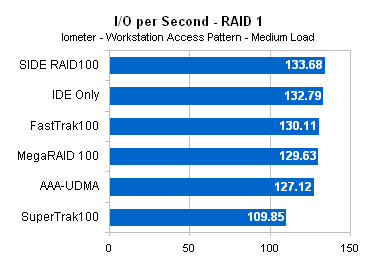
With the exception of the SuperTrak100, all the cards performed relatively similar in the I/O per second test. The SIDE RAID100 was the only card able to outperform the IDE drive, doing so by less than 1%.
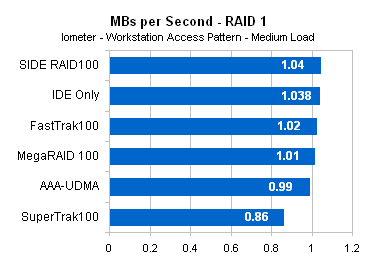
The results are the same for the MBs per second rate. Most of the cards are able to run a RAID 1 array at speeds very similar to that of a single IDE drive.
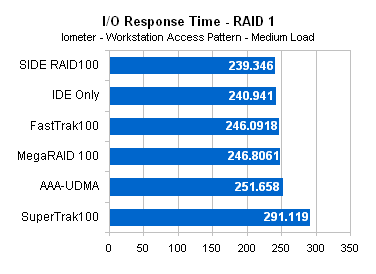
The I/O response times are very similar throughout all the cards, yet the SuperTrak100 falls to the bottom of the chart again for some unknown reason.
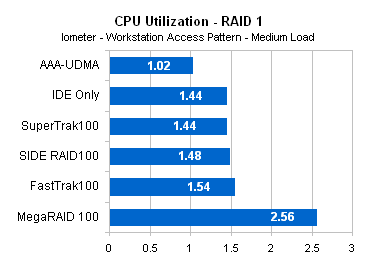
The situation changes a bit when we investigate how much CPU the cards are using. Again we find that the MegaRAID and its AMI MG80649 uses the most CPU time by far. The card with the lowest tax on the CPU in RAID 1 is the Adaptec hardware RAID card.
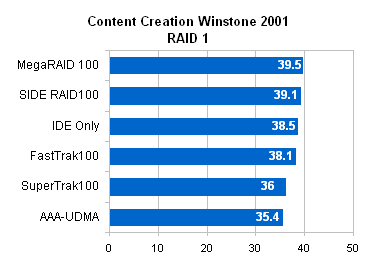
Perhaps the best demonstration of which RAID cards perform best when mirroring is the Content Creation Winstone 2001 test. Here we can see that the MegaRAID 100 and its AMI 80649 chip and the SIDE RAID100 and its Highpoint HPT370A chip provide the best RAID 1 speeds. The SIDE RAID100 performed 2% faster than a single IDE drive and the MegaRAID 100 performed slightly higher.
The purpose of RAID 1 configurations should not be speed but rather data security. Since the drives are mirrored, data is easily recoverable if a drive fails. The 2% performance increase that we saw with some of the cards does not hurt the decision to go RAID 1 either.










2 Comments
View All Comments
kburrows - Thursday, December 4, 2003 - link
Have you run any tests on any onboard RAID solutions for RAID 0 & 1? I would love to see the results posted for the new SATA RAID on the Intel 875 boards.Anonymous User - Sunday, August 17, 2003 - link
In adressing the performance of an raid array with different stripe sizes, you miss an important factor, namely the accestime of an disk. This wait time has two main couses. First the head positioning and second the rotational latency (the heads track the right trace, but position where the read start has not passed under the head). You may have to wait from 0 to (in the worst case) a full cycle.Since the disks move independently You can calculate that the average latency to get an small file is minimal when the stripe size is about an full cycle of an disk in the array (aprox. 250kB today). All other factors I do know do not reduce this. (controller overhead, transport,...)
So I think that today a minimum stripe size of 256kB should be used.